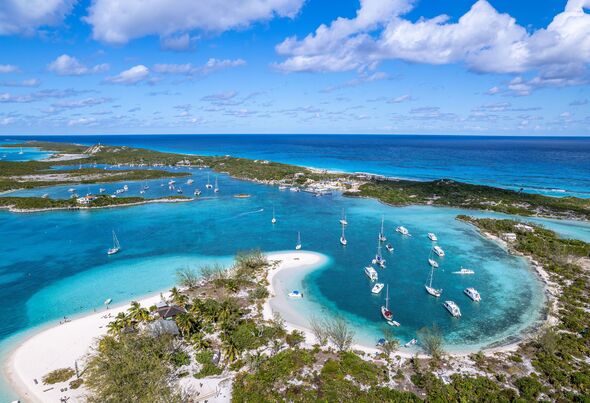Direct cruise spending in part of the world beloved by British holidaymakers has hit a record £3.29billion, a new study suggests.
A new report by Business Research & Economic Advisors (BREA) analysing the cruise industry in the Caribbean and Latin America found that ports in the region saw direct spending hit $4.27 billion (almost £ 3.29 billion) in the 2023-24 period.
Direct spend is a term used in procurement to refer to costs associated with producing goods and services used by customers.
Seatrade Cruise News (SCN) reports that the figure was about 27% higher than in 2018, the last time similar research was conducted.
The results, announced by BREA at the Florida-Caribbean Cruise Association’s conference in St. Maarten on Wednesday, recorded 33.3 million passenger and crew visits across the 33 destinations, with passenger spending reaching $3.07bn (£2.3billion).
This represented an average expenditure of $104.36 (£80.38) per person.
Cruise crew members, who were found to have made 3.9 million onshore visits, contributed a further $229.5 million (£176.7m), with an average of around $58.78 (£45.27) per visit, according to the report.
Of the 31 destinations featured in the 2018 and 2024 analyses, 26 saw increasing spending, with 14 seeing spending rates over $100 per passenger (up from 12 in 2018).
The 33.3m passenger and crew visits are up 13% compared to the 2018 study, and passenger visits to the 31 destinations featured in both rose by 17%.
The report also highlighted the significant economic boost from a single transit cruise call. On average, a cruise call with 4,000 passengers and 1,640 crew generates was estimated to generate $369,100 (£284,242) in passenger and crew spending.
Additionally, the BREA report said cruising profoundly impacts the jobs market, creating 94,000 roles across the 33 destinations it examined.
The FCCA engaged with the study in partnership with destinations, and the research provided insights, including on what people buy, the types of tours they take, and levels of satisfaction with tours and visits.
FCCA chief executive Michele Paige said: “We could not be prouder of these results and what they mean for the lives and livelihoods of so many throughout the Caribbean and Latin America.
“In addition to showing what cruise tourism brings to these destinations’ economies, many of the study’s findings will also serve as the foundation of building further mutual success between cruise lines and destination stakeholders.”
BREA measured direct spending impacts through surveys completed by passengers and crew (43,000 from passengers and 10,000 crew surveys), cruise line spending for services and provisions, port revenues, and employment generated by cruise ship calls, according to SCN reports.
Economic impacts were calculated using data from local government, regional development, and international economic agencies to assess how employment, wages, port fees, and taxes had been affected during the timeline studied (the 12 months from May last year to April 2024).
The indirect benefits of cruise tourism, including supplies purchased by tour operators, restaurants, and port authorities, were not included in the measure of cruise tourism expenditures. However, these expenditures were the basis for assessing the impact on total employment and wages.
Other indirect benefits, like spending from cruise passengers who return as stay-over visitors, were also not accounted for, nor were things like marketing and NGO partnerships that can provide economic benefits to destinations as per SCN.
